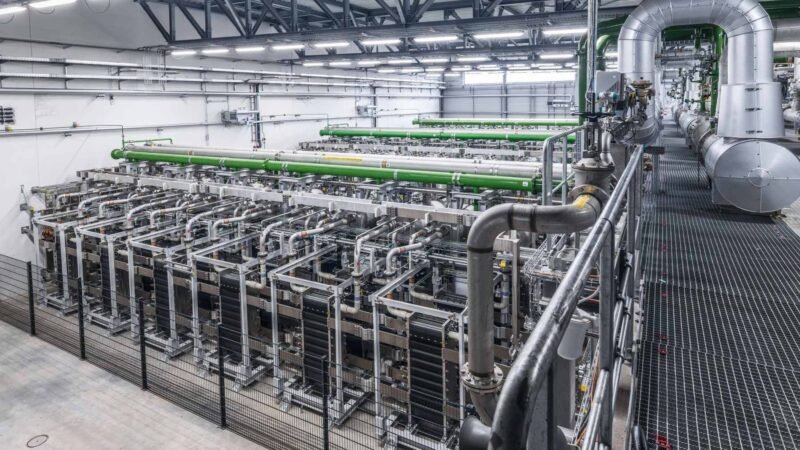Se debe reducir la solicitud de material contaminante.

The process of manufacturing concrete involves heating raw materials, including cement, water, and aggregates, to high temperatures, releasing CO2 into the atmosphere. According to the International Energy Agency, the cement industry is responsible for approximately 8% of global CO2 emissions, ranking third behind production and energy transportation.
Furthermore, concrete manufacturing also contributes to water pollution. Chemicals such as calcium oxide and calcium hydroxide are used in its production, which can be harmful to aquatic life if discharged into watercourses.
Additionally, the extraction of raw materials for concrete, such as sand, gravel, and limestone, can disrupt habitats and wildlife. On top of that, concrete is a non-biodegradable material, meaning it does not naturally decompose in the environment and is primarily responsible for the urban heat island effect, which raises temperatures in cities.
Enough Concrete
Concrete has recently been in the media due to the high prices paid by Valencian generals of construction companies involved in corruption cases. It is a material that has historically been associated with political scandals, real estate bubbles, or failed urban projects when primarily used in construction.
In addition to these controversies, this material has significant ecological and social impacts. A report by the new ecologists in action analyzes its production and use, consequences, and necessary alternatives to transform the sector.
Super Concrete
Cement production, one of the main components of concrete, accounts for 7 to 8% of CO₂ emissions worldwide. Its decarbonization is complex, as reflected in the report, because, in addition to emissions from the energy sources used, those from the chemical processes of its production are harder to avoid.
Moreover, the extraction of raw materials from quarries causes habitat loss, and the high water demand for its production leads to water stress, accounting for 9% of industrial water extractions worldwide. In the peninsula, locating factories in areas already lacking water availability, such as Levant or the South, can exacerbate the water deficit.
Causing All Sorts of Problems
In the Spanish state, concrete consumption is divided 44% for public works and 56% for residential and non-residential buildings. Its overuse has fueled unsustainable speculations and urban development. In urban areas with high concentrations of concrete, the material creates heat islands by retaining heat during the day and releasing it at night, exacerbating the effects of global warming.
Additionally, impermeable soil prevents water absorption into the ground, worsening floods caused by events like Dana, which will become more common due to climate change.
Less Concrete Demand to Make a Real Change
To address the sector’s issues, the report concludes that practices need to be rethought and advocate for a new model where not only changes in production processes to achieve decarbonization are necessary but also a reduction in demand.
Among the proposed alternatives are rehabilitating existing buildings, using eco-friendly materials, and urban planning focused on space regeneration rather than uncontrolled expansion.
The report warns that without reducing concrete demand, achieving climate goals will be impossible and will not halt the environmental and social damage caused by this sector. It argues that a model shift is needed in other areas: social, labor, and economic, putting life at the center.







